2015 Lamborghini Top Speed
The 2015 Lamborghini Huracán LP 610-4 is a All-wheel drive Coupe. It has 2 Doors and is powered by a 5.2L V10 DOHC 40-valve engine which outputs 610 hp @ 8250 rpm and is paired with 7-speed automated sequential transmission with manual mode gearbox. The 2015 Lamborghini Huracán LP 610-4 has cargo capacity of Liters and the vehicle weighs 1422 (dry weight) kg. In terms of ride assists, the 2015 Lamborghini Huracán LP 610-4 has stability control and traction control in addition to anti-lock brake system (ABS). The vehicle has an optional engine as well It offers and. Safety features also include Driver-side front airbag and Passenger-side front airbag. The front suspension is Independent front suspension while the rear suspension is Independent rear suspension. The car also features a It has 20'' alloy wheels as standard. Electronic features include Cruise Control. For convenience, the car has Power windows and Power door locks. There is also a remote keyless entry feature. Moreover, the car has. The steering wheel has audio control buttons. In terms of performance, the car has 667 N.m of torque and a top speed of 312 km/h. The 2015 Lamborghini Huracán LP 610-4 accelerates from zero to 60 mph in 2.9 seconds and hits quarter mile at 9.2 seconds. Fuel consumption is 17.8 L/100km in the city and 9.4 L/100km in the highway. The car price starts at $ 260,990
2015 Lamborghini Huracan 0-100km/h, 0-200km/h & engine sound
2015 Lamborghini Huracan 0-60 MPH Test Video - 602 HP & 412 LB-FT
LOUD 2015 Lamborghini Huracán LP610-4 w/ Fi Exhaust! REVVING & Acceleration!
2015 Lamborghini Huracan vs 2014 Ferrari 458 Spider 1/4 Mile Drag Racing
Lamborghini Top Speed 2015 330km/h New Huracan on street - Sounds ★★★★★
2015 Lamborghini Huracán Used Price Estimates
Estimates based on a driving average of 12,000 miles per year
| Used Condition | Trade In Price | Private Party Price | Dealer Retail Price |
|---|
Even if the ride was like sitting on a jackhammer, though, we'd still love this car. It's got the image and performance expected of the Lamborghini brand but with enough refinement to make it fully part of the modern exotic supercar era. Of course, there's also the Audi R8, Ferrari 458 Italia and McLaren 650S to consider, or even a Chevrolet Corvette Z06 or Porsche 911 Turbo S if you want similar performance for a lot less money. But the latest from Sant'Agata definitely earns our admiration and desire.
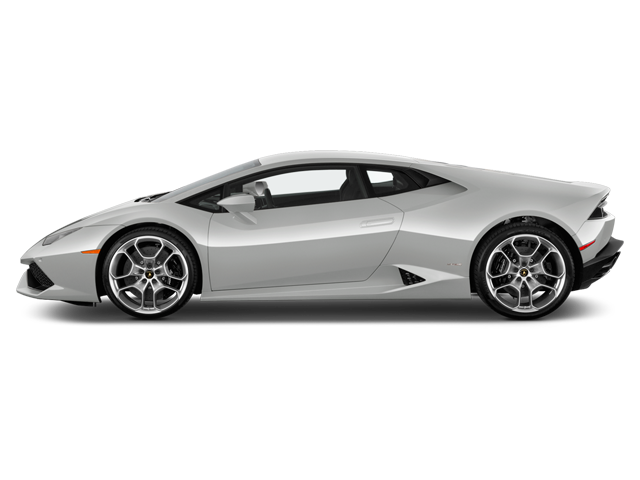
The 2015 Lamborghini Huracan is a two-seat midengine exotic sports car that is offered, for now, as the LP610-4 Coupe, where "610" refers to the V10 engine's horsepower (European "CV" measurement figure) and the "-4" indicates all-wheel drive.
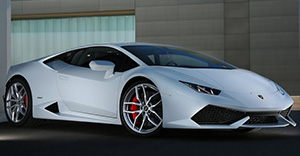
Standard equipment on the LP610-4 includes 20-inch cast-aluminum wheels, an automatically extending rear spoiler, full-LED exterior lighting, dual-zone automatic climate control, four-way power seats, an auto-dimming rearview mirror, leather upholstery, a tilt-and-telescoping steering wheel, a 12.3-inch multi-configurable digital instrument panel, a multimedia technology interface similar to Audi's Multi Media Interface (MMI) system, Bluetooth and a six-speaker sound system with USB, SD card and auxiliary inputs.
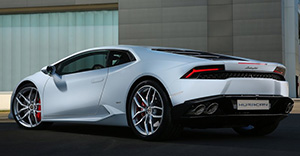
Options include 20-inch forged-aluminum wheels, a nose-raising suspension for driveway clearance, an exterior styling package, a clear engine cover with carbon-fiber engine compartment, an adaptive magnetorheological suspension, variable-ratio steering, a simulated-suede steering wheel, six-way power seats with heating, fitted luggage, a navigation system, front and rear parking sensors, a rearview camera and upgraded audio with HD radio. Various interior packages include two-tone leather/faux leather.
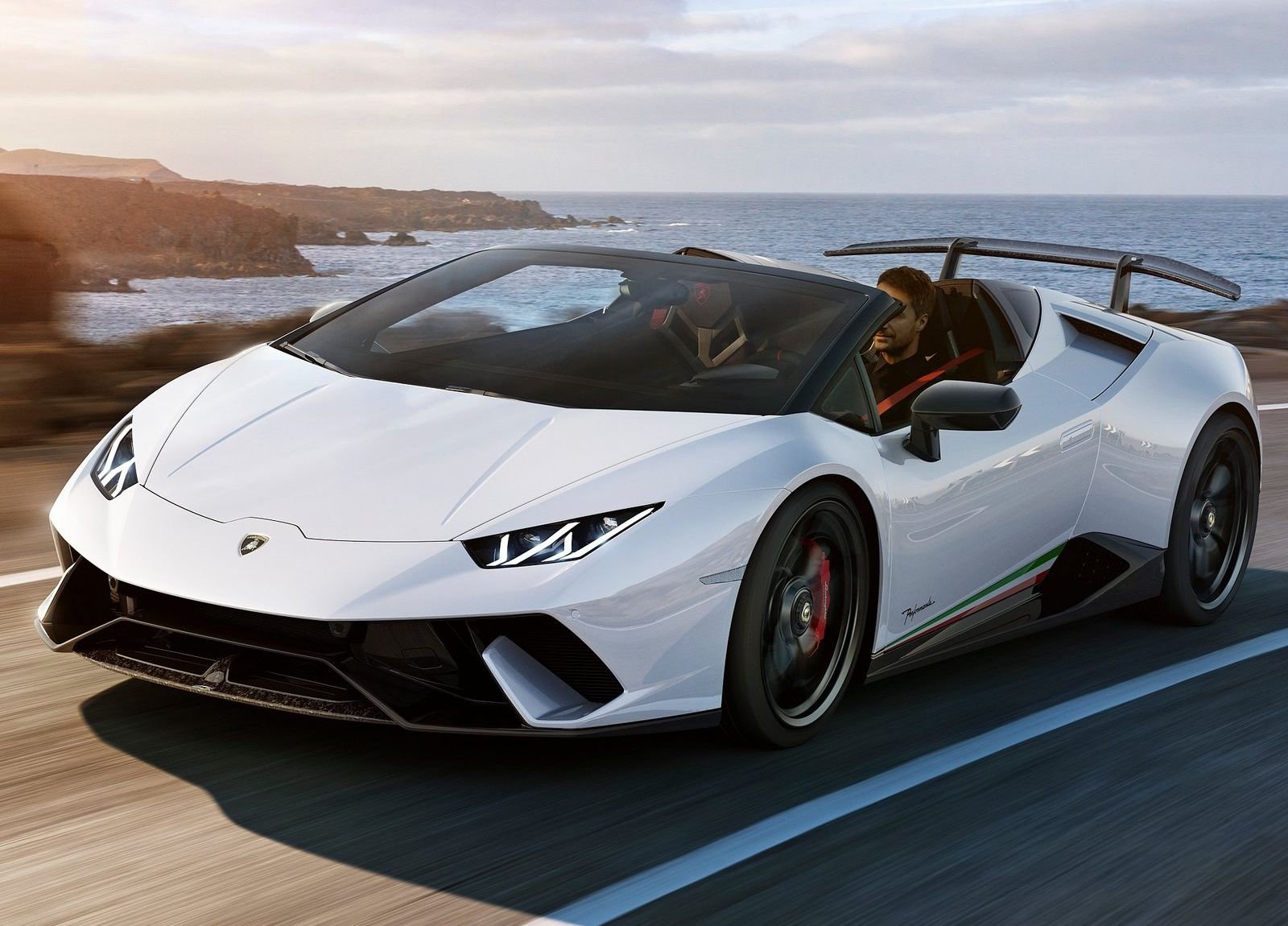
A mid-mounted 5.2-liter V10 powers the 2015 Lamborghini Huracan LP610-4 with 602 hp and 413 lb-ft of torque. A seven-speed automated manual transmission, known as Lamborghini Doppia Frizone (LDF), sends power to all four wheels through an electronically controlled all-wheel-drive system. Up to 100 percent of the power may be sent to the rear wheels, or up to 50 percent to the front. In typical driving, the split is 30/70 front/rear.
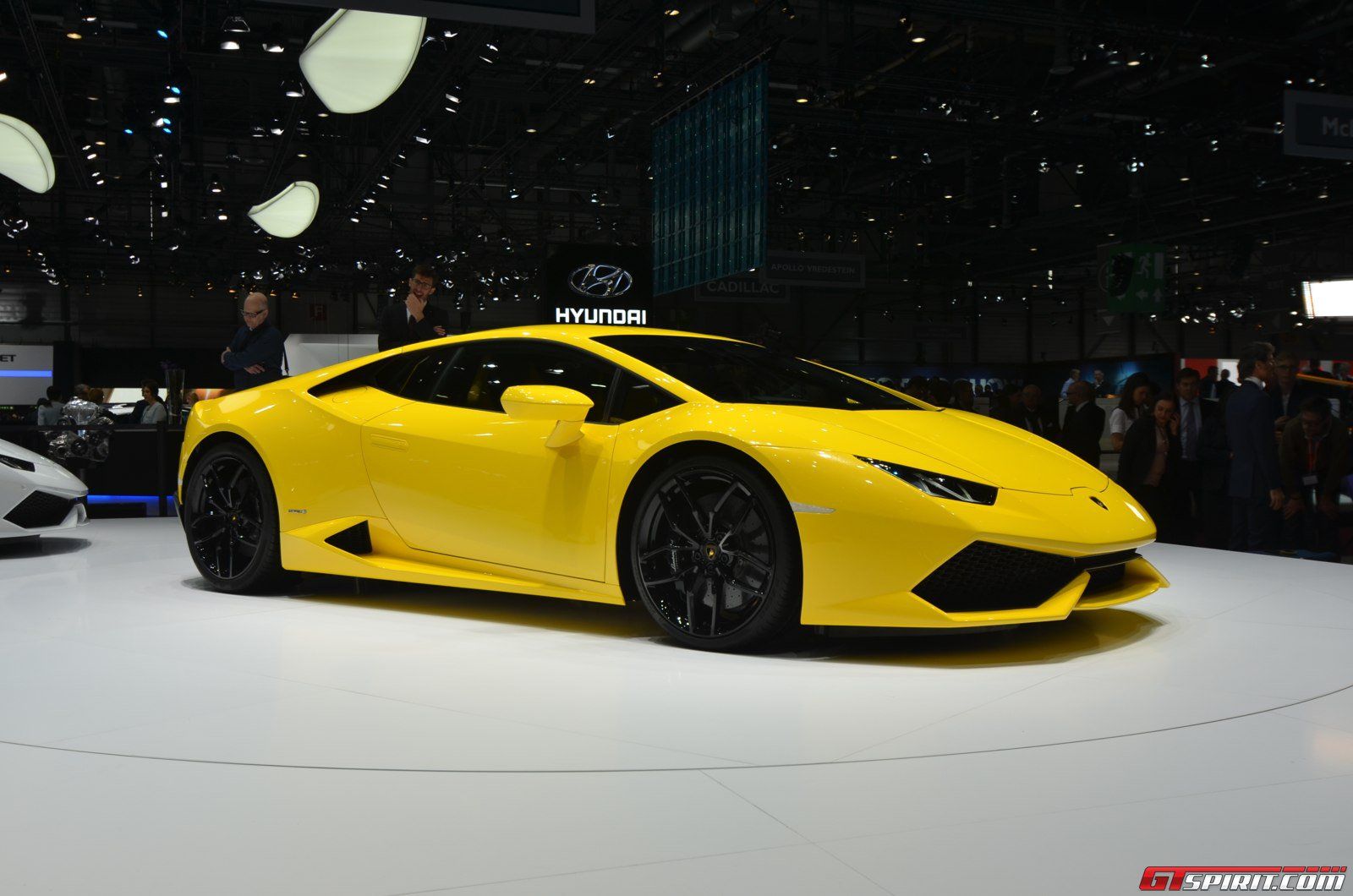
Lamborghini claims the Huracan requires 3.2 seconds for the 0-100 km/h (0-62 mph) sprint, and we've seen 0-60 mph reports around 2.8 seconds utilizing the car's built-in launch-control feature.
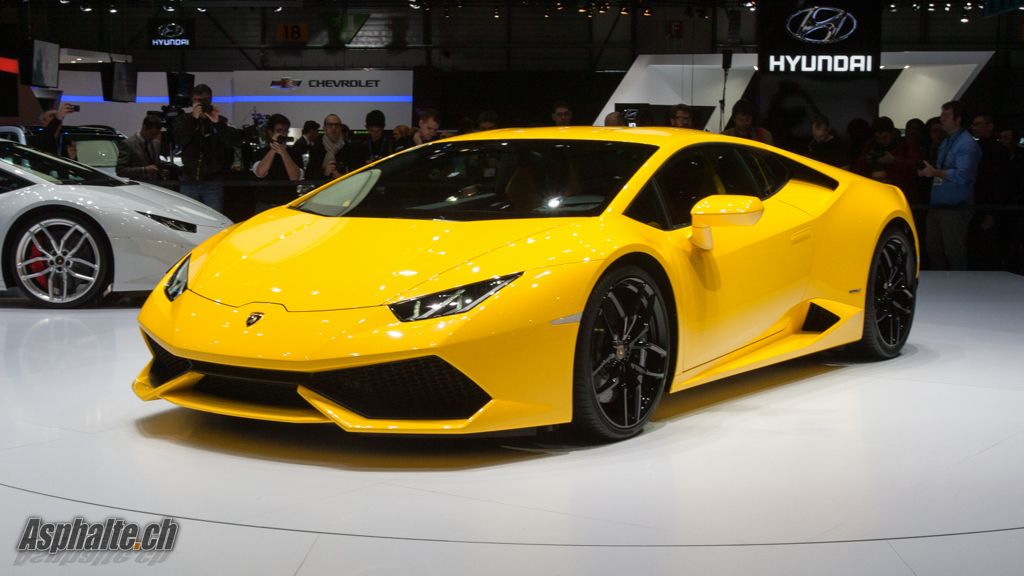
Thanks to engine stop-start capability and cylinder deactivation (late availability), the EPA-estimated fuel economy checks in at 16 mpg combined (14 city/20 highway).
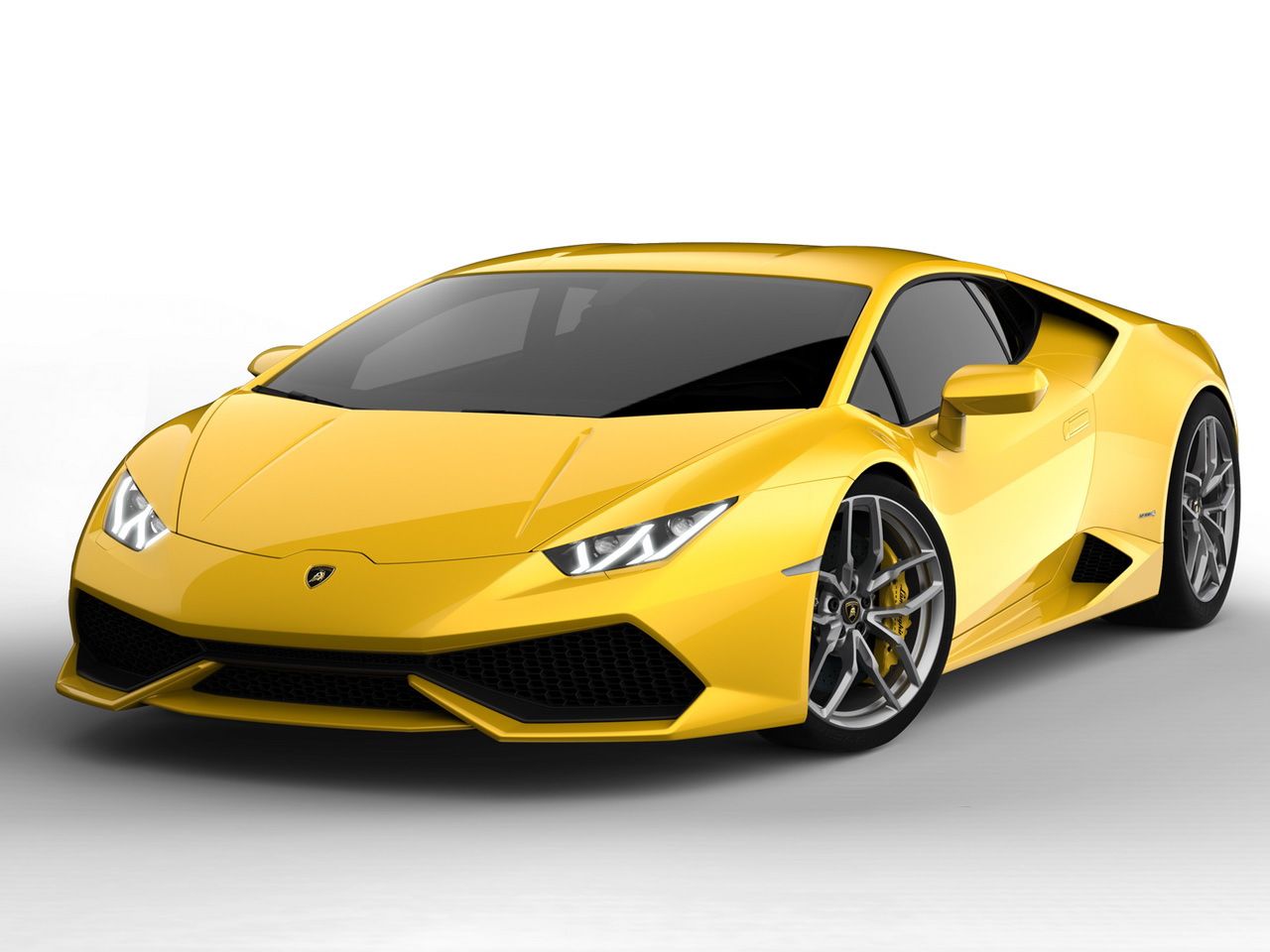
Standard safety features on all 2015 Lamborghini Huracan models include carbon-ceramic antilock disc brakes, stability control and side airbags with head protection. A rearview camera is optional.
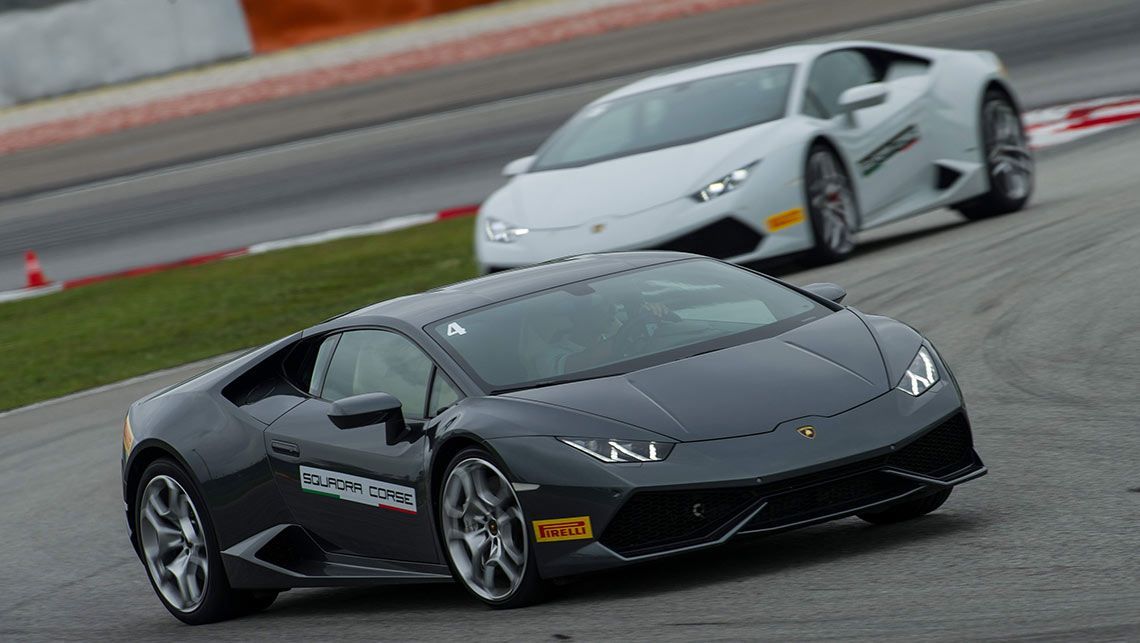
The 2015 Lamborghini Huracan's performance is just as otherworldly as one would expect from any exotic sports car. Now with driver-selectable dynamics (Strada, Sport, Corsa), the behaviors of the engine, exhaust, transmission, steering, suspension, all-wheel drive and stability control systems all change accordingly.
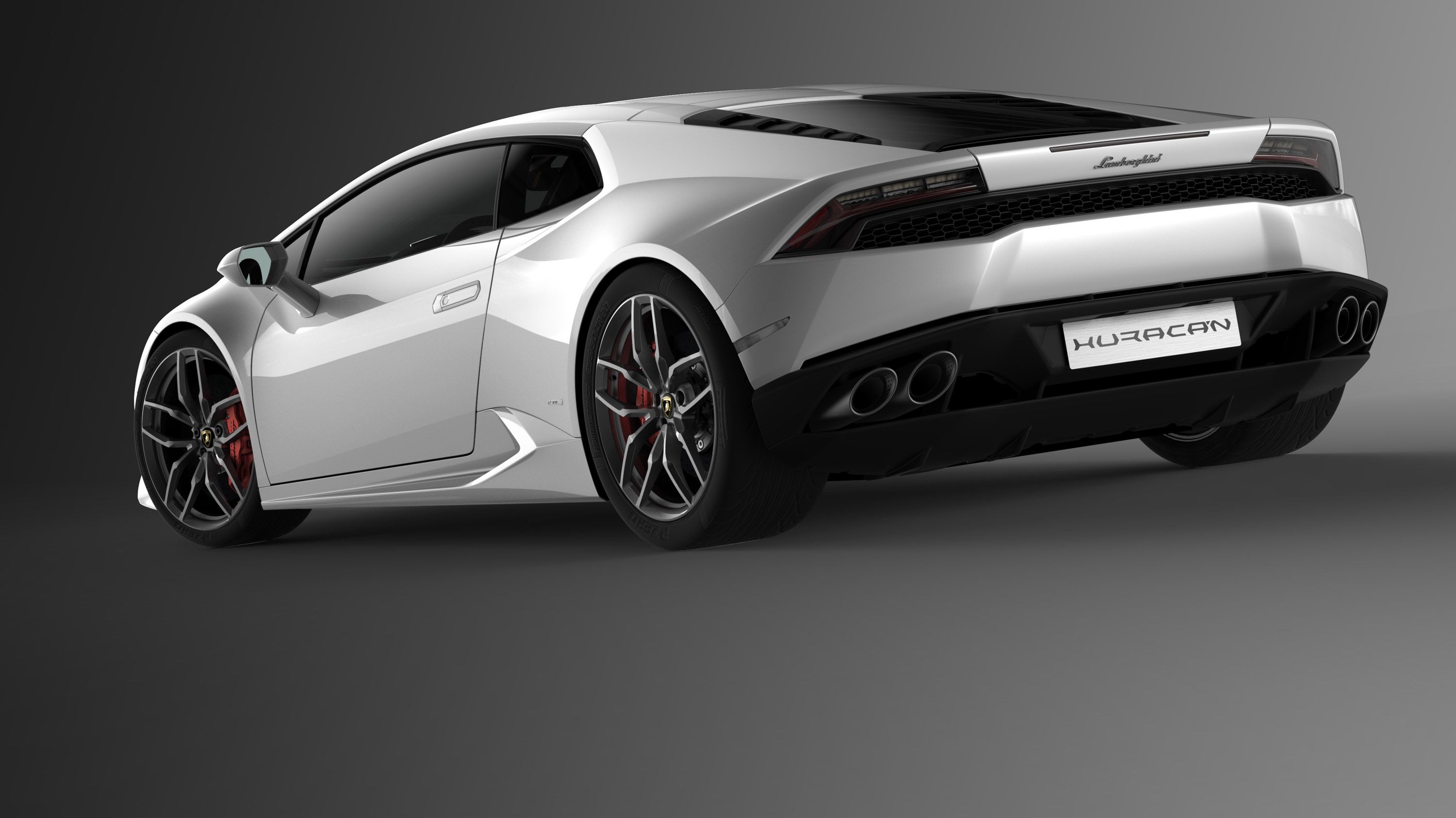
The V10 power plant shrieks off the line as the revs climb toward the 8,500-rpm redline. Compared to the 458 Italia from archrival Ferrari, the Huracan is slightly less nimble. It is, however, perfectly at home blasting down the highway and carving through high-speed sweepers and applying its all-wheel-drive traction to maximum advantage.

Despite the fighter-jet-inspired toggle switches and futuristic design, the Huracan provides a fairly livable cabin. Leather and soft-touch materials adorn much of the interior, as one might expect, and the switchgear, gauges and multimedia driver interface are essentially pulled from the Audi parts bin. Some might bemoan this dilution of Lamborghini's traditional Italian character, but most will be thankful that everything actually works. Further advancements can be found in the fundamentally sound driving position and the comfortable and supportive seats.

The fact that it's a Lamborghini tells you the Huracan is blindingly fast. A glance at the numbers proves it: The Huracan goes 0-60 mph in just over 3 seconds on its way to a top speed of 202 mph. That's the outcome of 602 horsepower, all-wheel drive and a curb weight of roughly 3,400 pounds. The stats are one thing, the experience another. Lamborghinis have long had the ability to seemingly defy physics, and the Huracan proudly continues to scoff at mortals' natural laws of motion. Switch to all-out "corsa" mode, put the hammer down, and the world blurs. The impact is a visceral hurricane as you are pinned to the seat and the 7-speed dual-clutch transmission cracks through gears as the V10 screams toward its 8,250-rpm redline. Back in "strada" (street) mode, the Lamborghini is a more civilized beast with light steering, a tolerable ride and efficiency-minded gear changes.
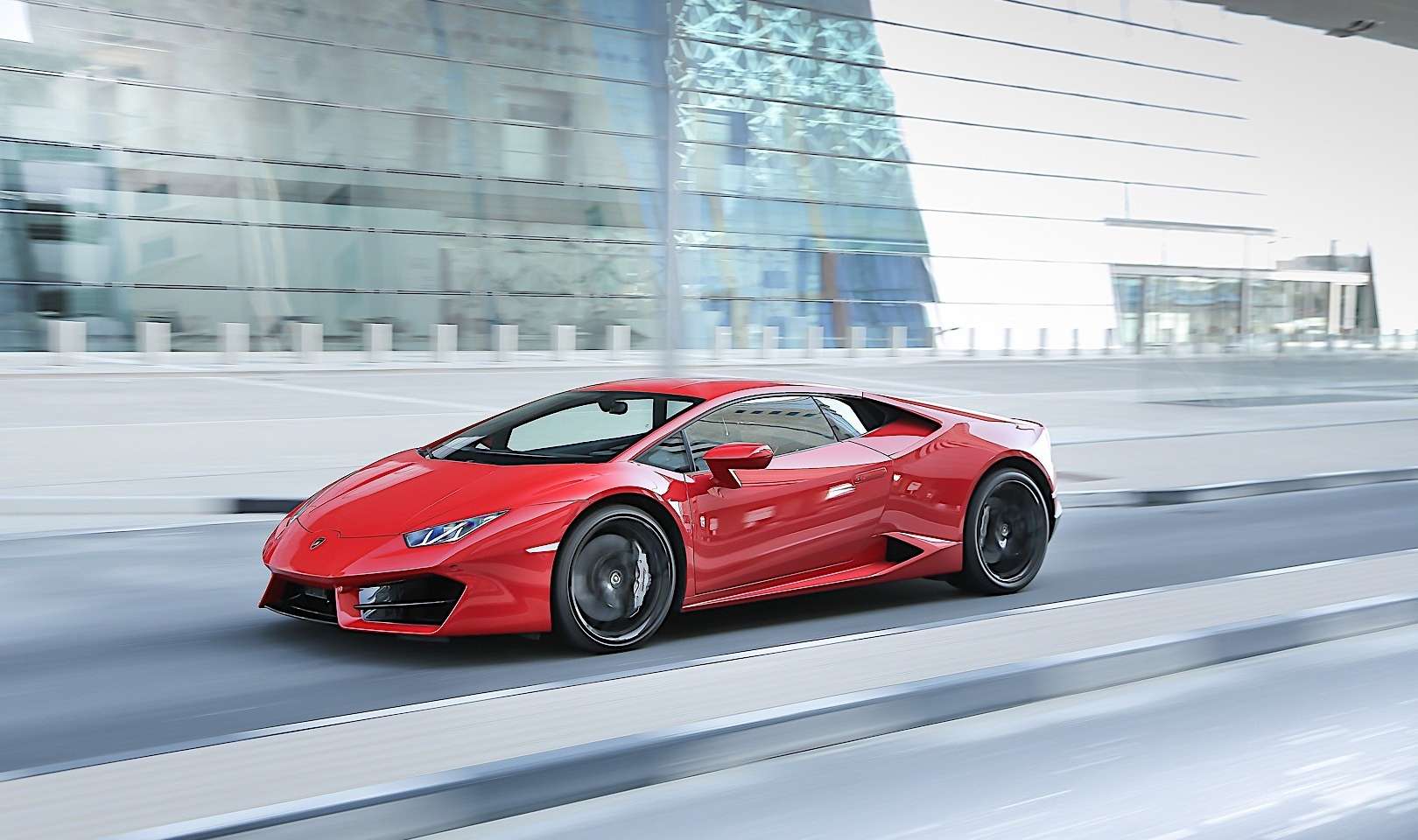
MAGNETO-RHEOLOGICAL SUSPENSIONWhat sounds like an X-Men villain is actually a friend to drivers, especially those who use their Huracan as a daily commuter. This optional system monitors driving conditions and adjusts the suspension within fractions of a second for optimal handling whether you're barreling down a track or meandering on a rural road.12.3-INCH TFT INSTRUMENT DISPLAYInstead of traditional analog dials for speed, rpm and other functions, the Huracan has a massive digital display that sits in front of the driver. In addition to displaying the usual instrument info, it can be reconfigured to show navigation, infotainment data and more. It's truly a sight to behold.

The Huracan's 2-seat cabin is arguably the poshest to ever grace a Lamborghini. Lined in leather and Alcantara and featuring an array of eye-pleasing buttons and switches, the 610-4's cockpit is comfortable and functional. It's also starting to look more and more like a high-end Audi. That's anything but a knock. Audi interiors are among the best, and everything is taken up a level here, starting with that massive digital display. An Audi-esque master dial and surrounding buttons offer easy control of navigation, audio and phone functions, while a row of seven aircraft-like switches make things like opening a window feel like an event.

If the amount of angles correlates directly to a car's beauty, the Huracan's aluminum skin is surely among the world's most breathtaking. More simply put, the Huracan is perhaps the most alluring wedge on the planet. At less than 46 inches high, this Lambo sits deceptively low, yet its squat stance is strong thanks to a width of over 75 inches not including the mirrors. In front, the hood slopes dramatically, offering good visibility out. That's not the case in back, where the engine resides. Cargo capacity is very tight, with room for only a small bag in the front trunk.

What does roughly $ 240,000 buy you beside the envy of friends and strangers alike? Aside from owning one of the world's most iconic brands, the new Lamborghini Huracan LP 610-4 comes with a voracious V10 engine, carbon-ceramic brakes, 20-inch wheels, full LED lighting, and a sophisticated chassis made from aluminum and carbon fiber. Amenities include dual-zone climate control, Bluetooth connectivity, 4-speaker AM/FM/CD/DVD player with USB and iPhone inputs, and partially power-operated seats.
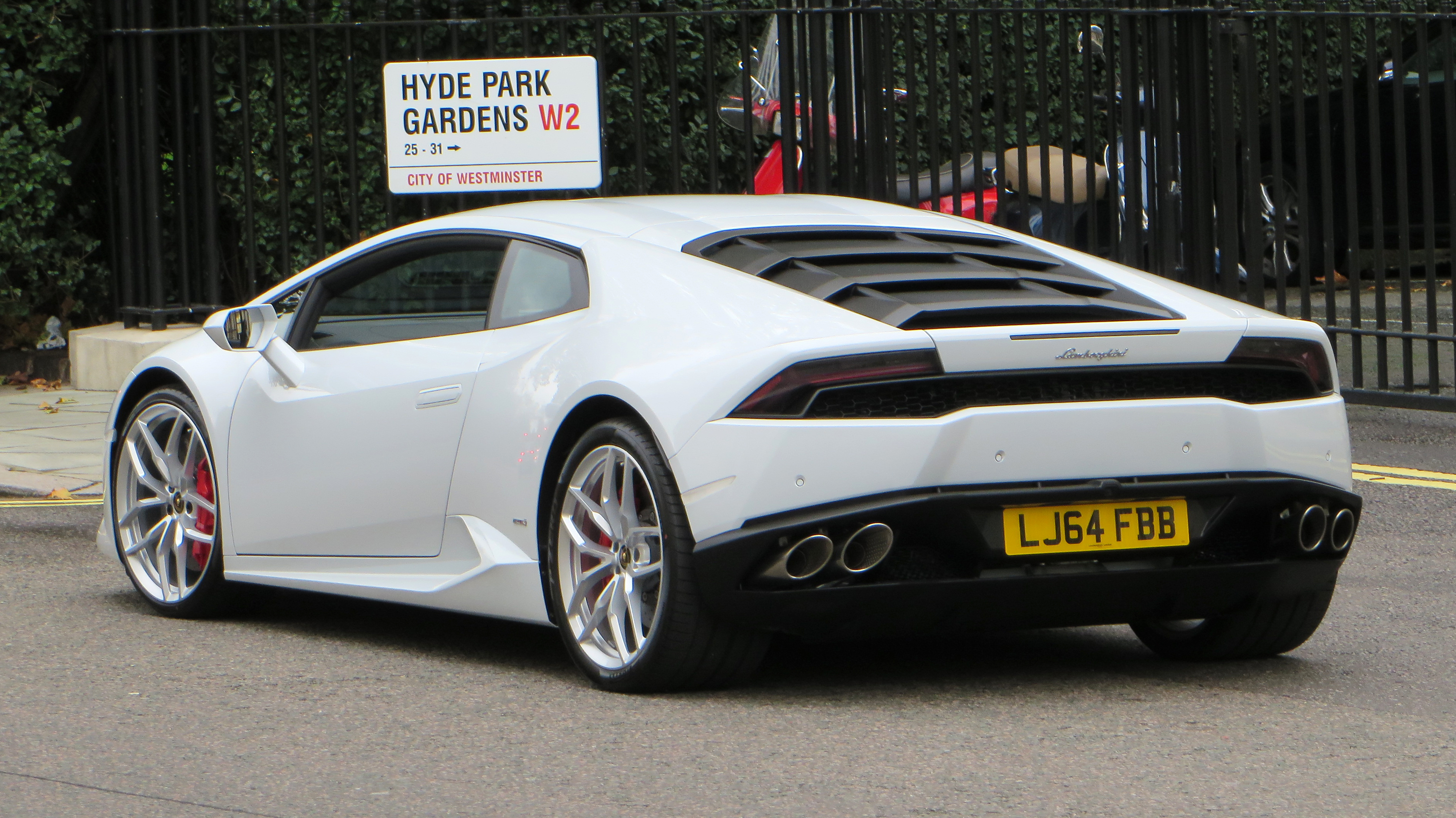
Performance and comfort upgrades are available for the Huracan, and they all come with Lamborghini prices. Desire a transparent bonnet so everyone can see that V10 heart in back? Of course you do, and that will be $ 7,000, please. Optional exterior paint colors will make a standout car further stand out, and range from an extra $ 4,500 to $ 14,000. You'll also have to pay extra if you want navigation, a rearview camera and even heated seats. If you're afraid of scraping that low front end, consider the lifting system that raises the front axle over an inch with the switch of a button.


The Huracán LP580-2 has been engineered and tuned for an essential driving experience. When you're out to replace a car like the Lamborghini Gallardo, the most successful model in the brand's history, you just know you have to keep everything razor-sharp.
The story of Lamborghini is very close to a particular fairy tale involving magic beans, giant beanstalks and multi-million dollar exotic car empires. Ferrucio Lamborghini's "beans" were his outstanding repair skill and passion for mechanics that eventually got propelled him up the sports-cars stalk of standards and earned him a place in automotive history.
Born in 1916 in Italy, Feruccio's talent was first noticed during the First World War. Through a fortunate twist of fate he was stationed on the island of Rhodes which, because of its positioning, was a rather peaceful place compared to the mainland. His primary job was that of fixing broken engines task that he effortlessly completed, garnering the respect and admiration of his colleagues.
Upon returning to his home near Modena after the war, the mechanical whiz though of establishing his own business. He established a small motorcycle and repair shop that turned out to be a very profitable endeavor. Feruccio had become a somewhat prominent figure due to his mechanical skill which attracted most of clients.
His business later expanded with Feruccio setting a tractor manufacturing facility in response to Italy's great demand of farming implements. His tractors were built from war-waste and parts taken from derelict vehicles, wreckage, basically every piece of metal that could be saved and used for production.
By 1960, he had expanded in the heating and air conditioning business as well, both having turned out very successful. Feruccio's entry in the car-making business would soon come after he had build wealth. Connoisseur of everything mechanical, Ferrucio became disappointed with some of Italy's top car brands for the vehicles they delivered, particularly with their engines. Former owner of Oscas, Ferraris and Maseratis, Feruccio was well aware of car engineering at the time.
One day, Ferrucio decided to pay a visit to Fetrari owner, Enzo, following clutch-related issues he had encountered on one of his models. Enzo, who was not exactly known for his poise and diplomatic abilities, simply sent Feruccio for a walk. Enzo's behavior triggered Feruccio's ardent desire to build his own sports car, as an example of what one should really be built like. Fueled by rivalry and passion, the Automobili Lamborghini SpA was founded in 1963.
The plant was built in Sant'Agata near Bologna on a 90,000 square ft area. Employees were soon found to fill the factory that took only 8 months to erect. Among the people brought on the team were top engineers and former Ferrari-workers like Giotto Bizzarrini, Giampaolo Dallara and Giampaolo Stanzani. The first V12 Lamborghini engine was soon designed and became the basis of an ulterior very successful range of cars.
Housed by a Scaglione-Touring body, the engine delivered a spectacular 350 HP. Called the 350 GTV, the prototype was first revealed ate the Turin Autoshow the same Feruccio had founded his company. The car was a hit and orders started pouring in. The GT, as it was called once it entered mass production, was followed by the 450 GT and the four-seater 450 2+2.
All three cars garnered enough funds to allow Feruccio the development a new vehicle that would be the most famous Lamborghini model until the release of the Countach in 1973. The Miura was a very egotistic car: it shared its features with no other cars. Its uniqueness stretched from front to rear bumper and from top to bottom over a beautifully designed Marcello Gandini body. Sporting a transversal mid-mounted engine, the Miura looked like a cross between a mechanical bull and a racing car.
The next successor in the Lambo dynasty was the space-ship shaped Countach which premiered at the Geneva Auto Show in 1975. The Countach was an outrageously appealing display of drawing board brutality. Its futuristic look was further endorsed by the famous telephone-dial rims, 4-liter engine bristling with bull-inspired power and swing-up doors. Although it has an impact hard to comprehend nowadays, the car did have its flaws: high interior noise levels and complete lack of rear view. One could only park the Countach by hanging half outside the car and steer while looking back.
Despite its prestige, Lamborghini would soon be struck by financial-trouble driven orphanage. Following a major set-back of his tractor business in 1974, Feruccio sold the controlling interest (51%) of the Auto Lamborghini SpA to wealthy Swiss industrialist Georges-Henri Rossetti. Further issues causes by the 70's oil crisis forced the Italian no-longer-owner to sell the remaining interest to a second Swiss businessman, Rene Leimer.
Shortly after the ownership change, Lamborghini was declared bankrupt. Fortunately, help from racing team owner Walter Wolf came right in time and after a series of tests, an improved version of the Countach was developed, the 400S. Wolf's plans of buying the factory were rejected by the Italian Court who gave it to Giorgio Mirone on February 28ty, 1980. The new owner offered the plant back to Feruccio for a small amount of money but surprisingly, he refused the deal.
Following Feruccio's refusal, the company would find Swiss tutelage once more, under the Mimram brothers. Under their reign, the company saw a second coming to life, gaining enough resources to resume the development of the Countach with the LP500 S and QuattroValvole being later released. Until 1984, the Mimran brother shad not yet fully acquired the company, having been granted temporary administration of the facility as proof of their skill. The Mimran takeover was the beginning of an extensive healing and later development process, the company having produced a variety of new models such as the gas-guzzling LM004 and 002 off-roaders as well as the exotic Jalpa.
As good as things may have been under Mimran ownership, the company was sold to the Chrysler Corp. in 1987, who would sell it to to a group made of three Far-Eastern companies in 1994 one year after Feruccio's demise. All three companies were part of a holding owned by Indonesians Tommy Suharto and Setjawan Djody. After a series of complications, the small Italian super car manufacturer was taken over by Audi AG. The German investor resuscitated Lamborghini by focusing its resources into the development of a newer models. Audi played a major role in designing the Murcielago, the car that trumpeted Lamborghini's comeback. Models such as the Gallardo and the latest jet-fighter inspired Reventon followed. Only 20 something units of the latter were built so far, all of them having already been purchased for a "paltry" + $ 1,300,000 per unit.
Source: https://www.mycarspecs.com/car/2015-lamborghini-huracan-base-lp-610-4

0 Komentar